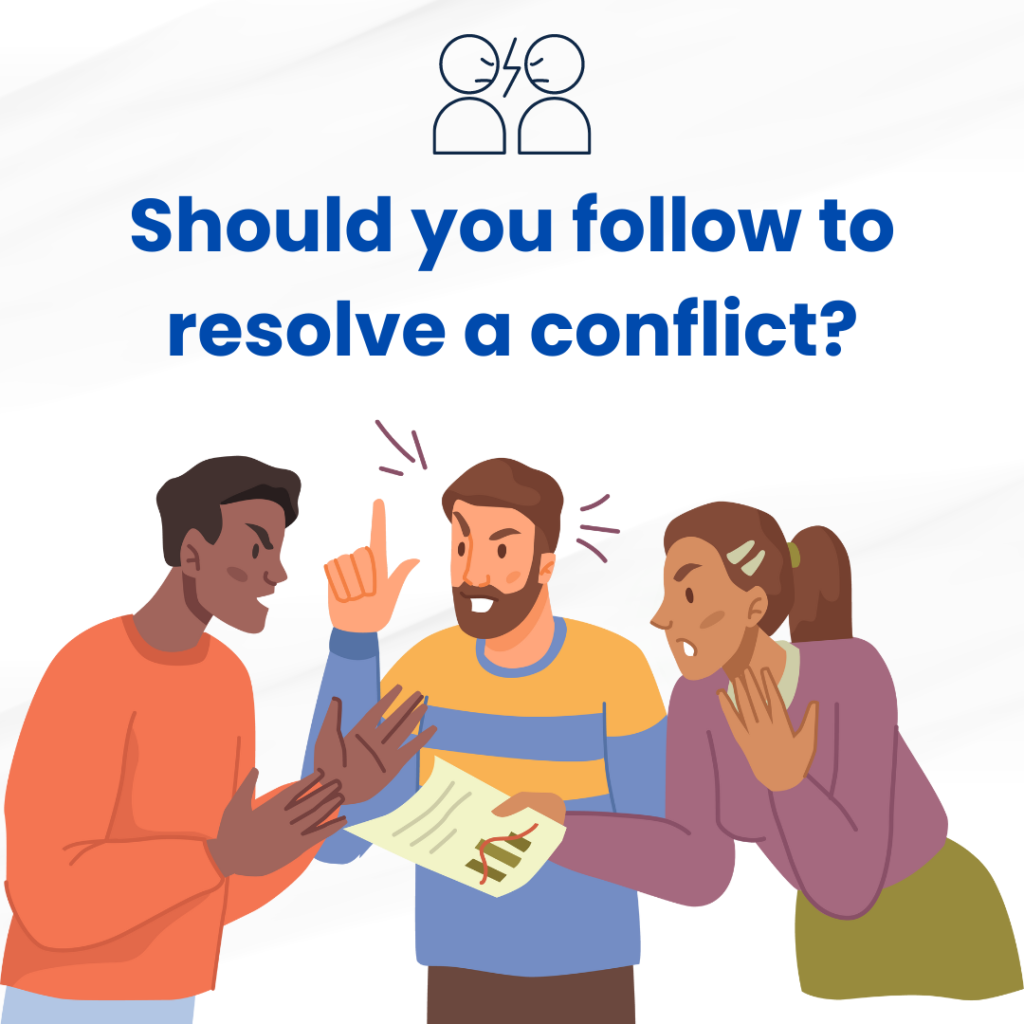Conflict is serious disagreement and argument about something important
Conflict is not a strange thing for people. Human beings experience it in their day-to-day lives – with their friends, families, and more so their professional lives. In the workplace, conflict causes a massive degree of frustration, pain, discomfort, sadness, as well as anger. In the world of today, organizations hire employees from diverse geographical locations with dissimilar cultural and intellectual backgrounds, as well as various viewpoints. In a working environment where people have disparate outlooks toward the same problems, disagreements are bound to happen.
Conflicts are inevitable in a person’s day-to-day life. And when they happen, the idea is not to try to prevent them but rather to resolve and manage them in an effective manner. When people use the appropriate tools of resolution to address issues, they will be able to keep their differences from rising to major problems. Conflict resolution is integral in the corporate world as it helps to distinguish a good business from a bad one. So, as a business owner, what steps should you follow to resolve a conflict?
Source of conflict
The first step in resolving conflict is clarifying its source. Defining the cause of the conflict will enable you to
understand how the issue came to grow in the first place. To do so, you need to discuss the needs which are not being
met on both sides of the issues. Ensure you obtain as much information as possible on each sides. Continue asking
questions until you are confident that all the conflicting parties understand the issue.
Safe and private place to talk
Many people often wonder and ask, “What is an approach to solving problems peacefully?” To have a constructive
conversation, you need to find an environment that is safe for you to talk to. Such a place also enables you to take
the necessary risks for honest communication regarding the issues at hand.
So, before trying to resolve any issue, find a safe and private place to talk. And while at this place, ensure that each
party gets enough time to air out their views regarding the matter.
Listen actively
After getting both parties to meet in a secure and private place, let each of them have the opportunity to air out their views and perceptions regarding the issue. Give each party equal time to express their thoughts and concerns without favoring the other. Embrace a positive and assertive approach while in the meeting. If necessary, set ground rules. Taking this approach will encourage both these parties to articulate their thoughts in an open and honest manner as well as comprehend the causes of the conflict and identify solutions.
Investigate the situation
After listening to the concerns of both parties, take time, and investigate the case. Do not prejudge or come up with a final verdict based on what you have. Dig deeper and find out more about the happenings, involved parties, the issues, and how people are feeling. Have an individual and confident conversation with those involved and listen in a keen manner to ensure you comprehend their viewpoints.. Also, try finding any underlying conflict sources which may not be evident or noticeable at fast.
Determine ways to meet the common goal
When managing conflict processes, you need to have a common objective, which is resolving the issue and ensuring it does not resurface. To solve any problem, you need to be aware of the different stages of conflict. This will enable you to look for the ideal ways to meet the common goal. After clarifying the source of conflict, talking to both parties, and investigating the situation, you need to sit down with both parties and discuss the common ways you can execute to meet the common goal, which is managing and resolving the matter.
Agree on the best solution
Employees will find it easy to interact with another as they understand that they have one goal, which is meeting the company’s objectives. So, after investigating the situation and determine ways through which you can resolve the issue, both parties need to develop a conclusion on the best solution for the problem. And to agree on the best, you need to identify the solutions which each party can live with. Afterward, determine the responsibilities each party has in resolving the conflict. Also, it is crucial to use this chance to identify the root cause and ensure this issue will not come again.
Evaluate and decide preventative strategies for the future
Never presume that the issue is resolute. So, ask yourself, “What is the second step of effective communication?” and “What kind of internal communication is there in the company?” Knowing this will help you ensure that the employees are working together to meet the organizational goals. So, continue keeping an eye on the issue and assess if the solution is effective.
Also, decide on preventative strategies for the future. Some people may not agree on everything, and this may be an
issue. So, look for lessons you can learn from the conflict and how you handle it. This will help you know what you can do when the issue resurfaces as well as enable you to develop and nurture your conflict management skills.
In conclusion, Managing and resolving conflict at work is integral in meeting organizational goals. So, if you have any problems or there are disagreements between your employers, look for ideal ways you can manage this situation.





Leave a Reply